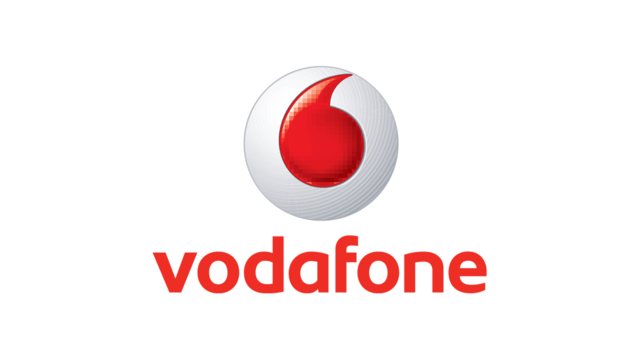Introduction to Personal Branding
In today’s fast-paced digital landscape, personal branding has become a vital tool for entrepreneurs looking to stand out. It’s no longer just about the product or service you offer; it’s about the story behind it and the persona that brings it to life. Think of founders like Emily Weiss of Glossier, Ben Francis of Gymshark, and Elon Musk of Tesla. Each has masterfully crafted their own brand identities, resonating with millions while building formidable companies.
But what makes their brands so powerful? It’s not just charisma or innovative products—it’s how they connect on a personal level with their audience. From social media presence to community engagement, these leaders have established themselves as much more than business owners; they’ve become influential figures in their industries.
If you’re an entrepreneur eager to build your own personal brand and establish a solid digital reputation, you’re in the right place. Let’s dive into the strategies that can help you create a compelling identity that captivates audiences and elevates your entrepreneurial journey.
The Importance of Personal Branding in the Digital Age
The digital age has transformed how we connect and communicate. Personal branding is more crucial than ever for entrepreneurs looking to stand out.
In a world overflowing with information, your personal brand acts as a lighthouse. It guides potential customers toward you in the vast sea of options available online.
Your unique story and skills are now your currency. A well-crafted personal brand can create trust and credibility, allowing you to engage meaningfully with your audience.
Social media platforms serve as stages for showcasing who you are. They offer tools to amplify your voice and share insights that resonate with others.
Building a strong digital reputation is not just about visibility; it’s about reliability too. When people identify with your values, they’re more likely to become loyal supporters of your journey.
Case Studies: Glossier, Gymshark & Tesla Founders
Emily Weiss, the founder of Glossier, started as a beauty blogger. She captured her audience by sharing authentic experiences and insights into the cosmetic world. Her brand emphasizes community feedback, making customers feel valued and involved in product development.
Ben Francis launched Gymshark from his bedroom while studying at university. His journey began with a passion for fitness and entrepreneurship. With an emphasis on transparency and engagement through social media, he inspired countless followers to embrace their fitness journeys alongside him.
Elon Musk is synonymous with innovation through Tesla. He leverages bold visions that challenge the status quo in transportation energy. Musk’s personality shines online; whether it’s tweets or interviews, he connects deeply with tech enthusiasts around the globe.
Each founder crafted their narrative distinctively while maintaining consistent authenticity across platforms. Their stories resonate because they reflect personal passions rather than just business goals.
Identifying Your Unique Value Proposition
Identifying your unique value proposition (UVP) is crucial in building a personal brand that stands out. Your UVP is the essence of what makes you different from others in your field.
Begin by reflecting on your skills, experiences, and passions. What do you love to do? How can those strengths serve others?
Next, consider your target audience. What problems are they facing? Determine how you can address these challenges in a way only you can.
Research competitors too. Analyze their offerings and identify gaps where you can shine brighter. This will help clarify what sets you apart.
Distill this information into a clear statement that encapsulates who you are and why people should care about your journey as an entrepreneur. A solid UVP becomes the foundation for all aspects of your personal branding efforts moving forward.
Crafting Your Personal Brand Story
Your personal brand story is the heartbeat of your identity. It’s how you communicate who you are and what you stand for.
Start by reflecting on your journey. What experiences shaped your path? Highlight moments that define you, whether they’re challenges overcome or milestones achieved.
Emphasize authenticity. Your audience craves genuine connections, so share not just successes but also struggles. This vulnerability can make your narrative relatable and engaging.
Consider the emotions tied to your experiences. Use storytelling techniques to draw readers in—paint vivid pictures with words that evoke feelings and inspire action.
Align this narrative with your unique value proposition. Ensure every element reinforces what sets you apart as an entrepreneur while staying true to yourself. Crafting a compelling brand story takes time; it evolves as you grow personally and professionally, ensuring it stays relevant to both you and your audience.
Leveraging Social Media and Online Platforms
Social media is a powerful tool for personal branding. It allows entrepreneurs to connect directly with their audience. Platforms like Instagram, Twitter, and LinkedIn offer unique opportunities to showcase your personality.
Start by choosing the platforms that resonate most with your brand. Be where your target audience spends their time. Share content that reflects your values and expertise while inviting interaction.
Engagement should be a two-way street. Respond to comments and messages promptly. This fosters a sense of community and shows you care about your followers’ opinions.
Visual storytelling enhances connection as well. Use photos, videos, or graphics to express ideas more vividly than text alone can convey.
Consistency in posting also matters greatly. Regular updates keep you top-of-mind without overwhelming followers with too much at once. Remember, building an online presence takes time; patience pays off in establishing credibility within your niche.
Building a Community and Engaging with Your Audience
Building a community around your personal brand is not just beneficial; it’s essential. People crave connection and collaboration. They want to feel part of something bigger.
Engagement starts with sharing valuable content. This could be insights, tips, or even behind-the-scenes peeks into your journey. Authenticity shines through when you give people a glimpse of who you really are.
Encourage conversations by asking questions and responding promptly to comments. Make it clear that you value their opinions. Use polls or surveys to gather feedback and involve them in the decision-making process.
Host live sessions or webinars for real-time interaction, allowing followers to engage directly with you. Such moments create lasting connections and foster loyalty towards your brand.
Remember, building a community means nurturing relationships over time. It’s about creating an environment where everyone feels heard and appreciated while contributing positively to your brand’s growth.
Authenticity and Consistency in Personal Branding
Authenticity is the heart of personal branding. People resonate with genuine stories and real experiences. Without authenticity, your message may fall flat.
Consistency walks hand in hand with authenticity. It’s about delivering a clear message across all platforms. Whether through social media posts or blog articles, maintaining a unified voice builds trust.
Your audience wants to know what you stand for. This clarity attracts followers who share similar values and interests.
Regular updates are essential too. Stay engaged without veering off your core principles. Consistent content fosters familiarity, making it easier for people to connect with you.
Remember, building a personal brand isn’t just about showcasing achievements; it’s also about vulnerability and openness. Sharing both triumphs and setbacks creates relatability.
When authenticity meets consistency, your brand becomes memorable—and that’s where the magic happens.
Measuring Success and Making Adjustments
Building a personal brand is an ongoing journey. To ensure your efforts are paying off, it’s vital to measure success regularly. Set specific goals for your entrepreneur personal branding strategy. These could be increasing social media followers, engagement rates, or even driving traffic to your website.
Use analytics tools to track these metrics over time. They can provide insights into what content resonates with your audience and what doesn’t. If you notice that certain posts engage more effectively than others, adjust your strategy accordingly.
Don’t shy away from seeking feedback as well. Engage directly with your community through surveys or informal polls on social media platforms. Their input can guide you in refining your approach and making necessary adjustments.
Remember that the digital landscape is ever-evolving. Trends change rapidly; staying adaptable is key to maintaining a strong digital reputation. By continuously measuring success and being willing to pivot when needed, you’ll not only build but also sustain a robust personal brand like the founders of Glossier, Gymshark, and Tesla have done so successfully. Embrace this dynamic process for long-term growth and impact in the entrepreneurial space.










